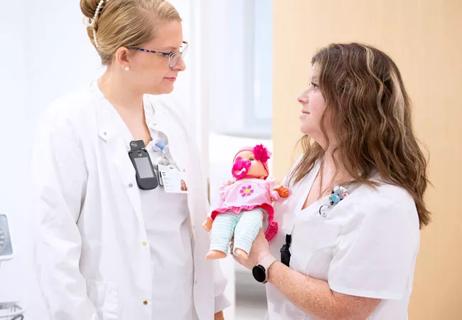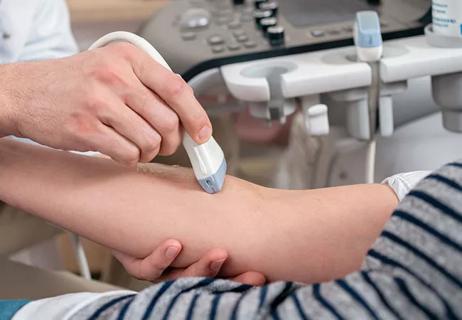Advertisement
Study examines influence of VOIPP technology

Home parenteral nutrition, also known as intravenous feeding, provides essential liquid nutrients to patients with intestinal failure in an outpatient setting. However, patients requiring home infusion therapy (HPN) have complex care needs and complications can arise, most notably catheter-related bloodstream infections (CRBSIs).
Advertisement
Cleveland Clinic is a non-profit academic medical center. Advertising on our site helps support our mission. We do not endorse non-Cleveland Clinic products or services. Policy
Patient education is one of the most effective methods for prevention of CRBSIs. But what type of education works best? Dorothy Emery, ADN, RN, a nutrition support nurse with Cleveland Clinic’s Center for Human Nutrition, conducted a research study to determine whether providing prehospital discharge education using voiceover interactive PowerPoint (VOIPP) on DVDs improved clinical outcomes in patients with tunneled catheters or peripherally inserted central catheters (TC/PICC).
When a primary service physician requests a patient be discharged from Cleveland Clinic on parenteral nutrition, Emery and her colleagues from the Center for Human Nutrition are consulted. Physicians and dietitians assess patients and, if they are approved for HPN, nutrition support nurses provide education on caring for TC/PICC lines at home.
Several years ago, Emery’s nurse manager attended a roundtable discussion on VOIPP education at a conference hosted by the American Society of Parenteral and Enteral Nutrition. “When she came back, she presented this to the nutrition support nurses as a possibility for an educational tool to replace the outdated videos we had been using,” says Emery. “That triggered the idea that led to our investigation of VOIPP.”
Emery and another nutrition support nurse conducted a prospective, randomized, controlled pilot study. Hospitalized patients with TC/PICC received either usual care education or usual care education plus VOIPP education prior to discharge.
Fifty-one patients participated in the study from April 2010 through September 2012. As part of the usual care component, Emery and a colleague verbally delivered one-on-one patient education on the following:
Advertisement
Intervention education consisted of the usual care education and viewing of VOIPP via a DVD on a laptop computer. The presentation, approximately 25 to 30 minutes long, contained audio and visual information on catheter care and when to contact HPN clinicians for advice. It showed real people completing catheter care behaviors, such as hand washing, changing a TC dressing, changing an end connector, flushing a catheter and securing a catheter. Patients also received a DVD of the VOIPP presentation to take home and watch again.
Participants completed multiple-choice questionnaires prior to receiving the education, immediately following education and seven to 10 days post discharge. Questions centered around topics such as the proper length of time to clean end connectors, the proper amount of time to wash hands before initiating HPN procedures, the preferred solution to clean work surfaces and the first step to take when a crack or hole is found in a catheter.
At 90 days, patients were assessed for CRBSI incidence rates, rehospitalizations, CRBSI-related rehospitalizations, non-CRBSI complications and patient calls to the HPN clinicians.
Results of the study indicated no superiority in patient knowledge or in 90-day clinical outcomes between the two groups. However, patients who received VOIPP education made more calls to clinicians for advice than those who did not.
While there wasn’t a significant difference in the two groups, Emery says working on the research project has sparked the nutrition support nurses to update their educational videos for both TC and PICCs and create one for port catheters. “Patients who require HPN have complex care needs,” says Emery. “Education is essential for safe home administration of therapy and helps promote patient satisfaction.”
Advertisement
Complete findings of the research were published in the October 2015 issue of “Nutrition in Clinical Practice” in the article “Voiceover Interactive PowerPoint Catheter Care Education for Home Parenteral Nutrition.”
Advertisement
Advertisement

How nurses can effect change through professional writing

Fellow critical care nurses welcome additional support and expertise

Pilot study confirms feasibility of conducting additional research on the novel treatment

Study shows ultrasound can be valuable tool for improving patient satisfaction by reducing failed IV insertions

New system uses vital signs to predict need for further intervention

Findings reveal personal and professional factors that influence nurses’ interest in medical research

Nurse scientists bridge divide between bench and bedside

Individual and population factors play a role